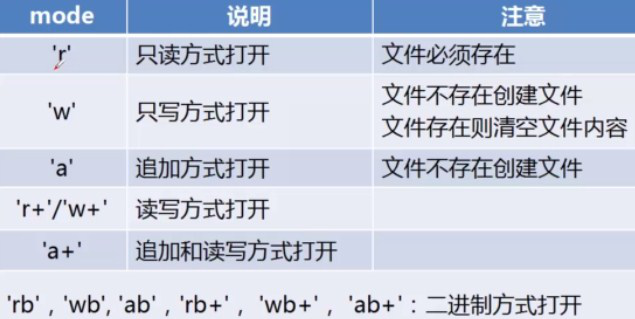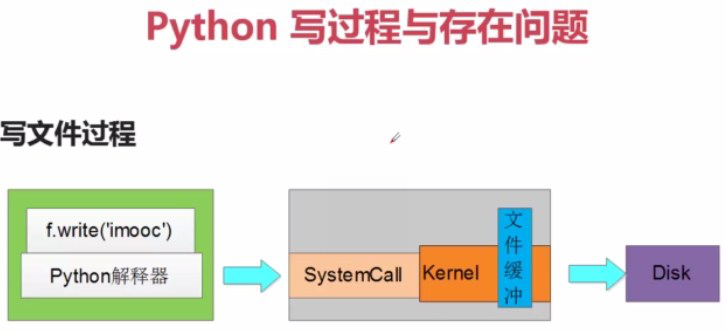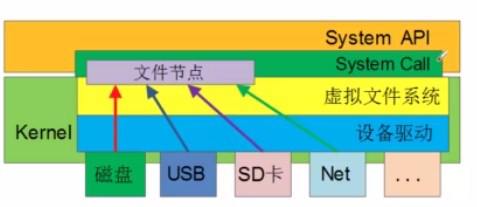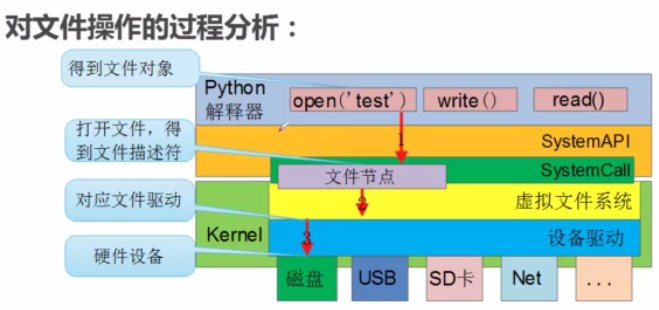一.python 文件访问
1.在python中要访问文件,首先要打开文件,也就是open
r: 只读
w: 只写 ,文件已存在则清空,不存在则创建
a:追加 ,写到文件末尾。如果文件存在,则在文件最后去追
加。文件不存在就去创建
+-:更新(可读可写)
r+ :以读写模式打开
w+ :以读写模式打开(参见w)
a+:以读写模式打开(参见a)
rb:以二进制读模式打开
wb:以二进制写模式打开
ab:以二进制追加模式打开(参见a)
rb+:以二进制读写模式打开(参见r+)
wb+:以二进制读写模式打开(参见w+)
ab+: 以二进制读写模式打开(参见a+)
2.打开文件。open打开文件 read读文件,close关闭文件
import codecs
fd = codecs.open('2.txt')
print fd.read()
fd.close()
>>> 11111
2222
33333
aaaaa
bbbbb
cccccc
3.查看文件有哪些方法
import codecs
fd = codecs.open('b.txt')
print fd.read()
print dir(fd)
fd.close()
>>> 11111
2222
333333
['close', 'closed', 'encoding', 'errors', 'fileno', 'flush', 'isatty', 'mode', 'name', 'newlines', 'next', 'read', 'readinto', 'readline', 'readlines', 'seek', 'softspace', 'tell', 'truncate', 'write', 'writelines', 'xreadlines']
1>fd.read() 方法,read()方法读取的是整篇文档。
fd = codecs.open('2.txt')
text = fd.read()
print type(text)
>>><type 'str'>
2>replace()函数替换文件中的某个元素。打开文件,读取后,对整个字符串进行操作.把2.txt 文件中的1替换成z
fd = codecs.open('2.txt')
a1 = fd.read()
print a1
a2 = a1.replace('1','z')
print a2
>>> 11111
2222
33333
aaaaa
bbbbb
cccccc
zzzzz
2222
33333
aaaaa
bbbbb
cccccc
3> 写文件,codecs.open()函数,避免文件乱码
fd = codecs.open('3.txt','w')
fd.write('liuzhenchuan\n')
fd.write('hello world\n')
fd.write('xiaban\n')
fd.close()
>>> liuzhenchuan
hello world
xiaban
4>fd.readlines()方法,读取文件,最后把文件每行内容作为一个字符串放在一个list中
fd = open('3.txt')
print fd.readlines()
fd.close()
>>> ['liuzhenchuan\n', 'hello world\n', 'xiaban\n']
5>fd.readline()方法,读取文件,读取文件一行,类型为字符串
>>> l
6>#fd.readline()方法,读取文件一行内容,返回一个字符串. # fd.next()方法,读取文件下一行内容,返回一个字符串
fd = codecs.open('3.txt','r')
print fd.readline()
print fd.next()
fd.close()
>>> liuzhenchuan
hello world
7>#write()方法,必须传入一个字符串.
fd = codecs.open('5.txt','w+')
fd.write('a\nb\nc\n')
fd.close()
>>> a
b
c
#writelines()方法,必须传入一个列表/序列
fd = codecs.open('6.txt','w')
fd.writelines(['123\n','234\n','345\n'])
fd.close()
>>> 123
234
345
8>with用法,不需要用fd.close()关闭文件
with codecs.open('3.txt','rb') as fd:
print fd.read()
fd.close()
>>> liuzhenchuan
hello world
xiaban
9>打印文件行号和文件内容
with codecs.open('2.txt') as fd:
for line,value in enumerate(fd):
print line,value,
>>> 0 liuzhenchuan
1 hello world
2 xiaban
10>过滤文件某行的内容
with codecs.open('3.txt') as fd:
for line,value in enumerate(fd):
if line == 3-2:
print value
>>> hello world
11>导入linecache模块,使用linecache.getline()方法,获取文件固定行的内容
import linecache
count = linecache.getline('3.txt',1)
print count
>>> liuzhenchuan
当然,这种方法是普通的写入和读取,我们通常还有这样的问题,那就是字典啊,元祖啊,集合啊等对象,需要写入,但是读取的时候还是要按照原来的形式读取,并非上述方法中的字符串方式读取。那我们就可以使用pickle这个工具了:
首先要导入包
然后要进行代码的编写,这里要记住,写入文件模式是wb,读取时rb(b一般都是二进制,想必大家应该知道了,它的存储方式):
|
1
|
pick_file
=
open
(
"pick.pick"
,
'wb'
)
|
如果此时,我们有一个集合:
|
1
|
list1
=
[
1
,
2
,
3
,
4
,
5
,
'abd'
,[
'a'
,
4
,
'g'
,
'd'
]]
|
则,我么可以这样存储:
|
1
2
|
pickle.dump(list1,pick_file)
pickle.close()
|
如果读取时候,我们可以这样做:
|
1
2
3
|
pick_file
=
open
(
"pick.pick"
,
'wb'
)
list2
=
pickle.load(pick_file)
pickle.close()
|



